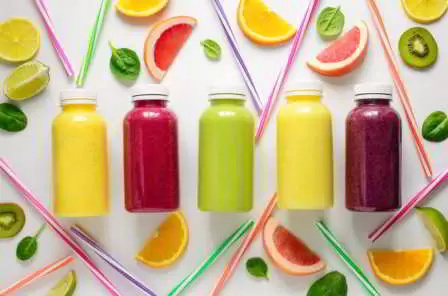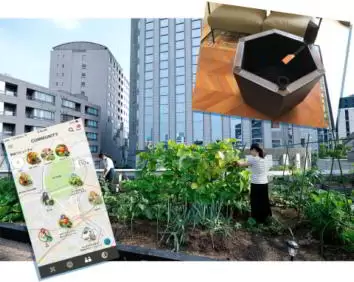
Views: 27
– Food innovation advances by incorporating a variety of AI / IOT / Nano and other technologies
Minapim by Hernan Valenzuela: The scenario is social challenges such as population growth, food crisis, large migrations, environmental destruction and scarcity of labor in the countryside. To solve this problem, various initiatives around the world are looking for solutions in different segments and are already competing in the food sector. The new food technology market is estimated at $ 6.5 USD worldwide.
The current food technology market can be divided into four sections:
1- The genre of “next-generation food technology,” such as vegetable meat and cultivated meat, that is attracting attention as a replacement for complete nutritional foods and animal protein substitutes.
2- Smart Kitchen ”, such as services to provide personalized cooking recipes, related appliances and IoT appliances.
3- Smart Delivery ”, such as an advanced meal kit and home delivery service, where the right ingredients for your taste come home,
4- Next Generation Restaurant ”that introduced robot technology to solve the labor shortage problem,“ Agritech ”, such as monitoring by IoT / AI devices and factories, is attracting attention.
The wave of food technology involves food and appliance manufacturers, a variety of related industries such as retail, restaurant, healthcare, IT services, logistics and many business opportunities.
* Rising business in food technology: Protein Creation, Herbal Milk, Herbal Cheese, Algae, Mushrooms, Herbal Technology Drinks. New Protein org
1- Base Food (Meguro, Tokyo)
A startup founded in 2016, has developed “BASE RAMEN”, a completely nutritious pasta. Nuts and grains rich in texture include chia seeds (Omega 3), kelp powder (folic acid), vitamins and other nutritional ingredients.
2-Sensor and AI monitoring for cultivation
A new shared farm concept, operated by PLANTIO, on the roof of a commercial building in Tokyo. Unlike traditional vegetable gardens, members work and manage together. A high tech farm that uses sensors and AI. It is the new form of “agriculture” that major developers, including Tokyu Land Corporation, are structuring.
The shared experimental farm was opened in June 2019 with the possibility of changing “food” and “agriculture”. “SUSTINA PARK EBISU PRIME” is the project operated by startup PLANTIO of Japan. Https://www.starmineplanning.com/new-blog/2019/5/17-ze3gn-seah9
The key feature is that several dozen members or more jointly manage various crops that are grown in a shared way. This is a completely new farm that has a division for each user and is different from traditional rental gardens, where each plant their crops.
Sensors and cameras are installed at various locations on the farm to monitor soil temperature, water content, lighting and outdoor temperature. Data are analyzed using the Crowd Farming System, a cloud-specific plant-growing AI, which predicts harvesting time, watering, monitors the sun’s radiation, and approximate growth time.
This AI has learned the knowledge of agricultural professionals as a “teacher” and its strength is that it can be easily managed, even for beginners and in primary crops. When manual work is required, a notification is sent to the member through a dedicated smartphone app.
3- Kson fast freezing foodtech
The company has entered the biomedical and agricultural industries and IT technology, combined with agricultural and industrial experts and industrial control teams, and has invested in the concept of health and green energy conservation and the presence of the highest quality of service and products.
Fast freezing is a technology that freezes ice crystals in a stretch while passing through the freezing temperature range (minus 1 minus 5 degrees) faster than the usual freezing method. Thus, the original quality can be maintained to the maximum when thawed without destroying the food cells.
For example, when frozen meat with a normal freezer is defrosted, a large amount of drip is produced accompanied by a taste component and at the same time texture and color are also impaired. However, with quick freezing there is almost no such deterioration and can be returned to room temperature. Fresh foods like vegetables and seafood and processed foods are fresh and can be kept fresh so consumers can enjoy use the original taste of the food. Fast freezing can be said to be one of the key technologies for creating “next generation food”.
4- JUST (Just)  Is a rice startup known for developing vegetable “eggs” and vegetable beef. The company promotes an environmentally friendly and sustainable “alternative protein revolution”.
Is a rice startup known for developing vegetable “eggs” and vegetable beef. The company promotes an environmentally friendly and sustainable “alternative protein revolution”.
Just was founded in 2011 as Hampton Creek. After launching JUST Mayo, a fully planted mayonnaise, the company name was changed to “Just”. Currently, the plant’s main product is “JUST Egg”, a “vegetable liquid egg” made from protein extracted from beans, launched in 2018, and is used to develop meat grown from cells.
The company analyzes the molecular properties and functions (water solubility, viscosity, etc.) of plant proteins extracted from hundreds of thousands of plants such as beans and corn. The strength is that it has a “discovery process” automation system that stores it in a database and searches for important materials. Therefore, easily emulsified vegetable proteins may be replaced by “mayonnaise” and those with chicken egg-like properties may be replaced by “egg”. Compared to conventional livestock and poultry, the environmental impact is overwhelmingly low and represents a new era of food startups providing “alternative protein” in a sustainable approach.
Characteristics: Gel and egg-like cooking – Natural golden color
Ingredients: Water, Mung Bean Protein Isolate, Expeller-Pressed Canola Oil, Contains less than 2% of Dehydrated Onion, Gellan Gum, Natural Carrot Extractives (color), Natural Flavors, Natural Turmeric Extractives (color), Potassium Citrate, Salt, Soy Lecithin, Sugar, Tapioca Syrup, Tetrasodium Pyrophosphate, Transglutaminase, Nisin (preservative). (Contains soy.)
Egg-free, Non-GMO, Cholesterol-free, Dairy-free, 5g of protein / serving. Serving size 3 Tbsp (44mL) Amount% Daily Value *
5- Silicon Valley Tech Whiskey
Whiskeys and wines are intrinsically intertwined and chemically altered, and the best are produced over time.
Endless West is a startup that wants technology to transform these traditional brewing and distilling methods. Based in San Francisco, adjacent to Silicon Valley.
Chua, a biomolecule specialist, had the idea that the molecular structure of the high-value liquor is elucidated, and by recreating it, you can do something similar to a “vintage” product in a short period of time.
In 16 years, three of his fellow scientists founded Endless West and began large-scale experiments. They worked the reproduction of whiskey that normally had spent many years in a barrel. Unlike conventional processes such as fermentation and distillation.
Arctic ice and refrigerator ice have the same molecular structure, although the manufacturing method is different. They compare their method as follows: The reason for choosing whiskey is regulatory issues. “We don’t produce wine from grapes, so there is a US regulatory hurdle at the moment,” Alec Lee explains.
Identification of molecules that taste the same
Chua and his colleagues did repeated tests to identify molecules, and identified which molecules were important for reproducing the crop. Smoke, sherry, spices, vanilla and other whiskey flavors have been achieved at the molecular level without adding materials that directly produce these aromas. Everything is derived from plants and yeast.
The development was the successful whiskey “Glyph” is being marketed by some liquor stores and bars.
$ 40 for a nice scent
One of the company’s partners visited a Silicon Valley liquor store that sells Glyph. And bought the bottle for $ 42.54. “It seems to sell better than other whiskeys. When I asked the store clerk, he told me, “It’s a good whiskey. That doesn’t mean it’s selling well, but many customers buy it.
Glyphs are now available at liquor stores. Based on recipe “85H”, the label on the back shows the taste
Glyphs made with the “85H” recipe appear to have strong vanilla and sherry ingredients, according to the flavor table shown on the label on the back. When you drink straight, the taste is refreshing with a good vanilla aroma. It seems that alcohol is weaker than normal whiskey.
Finalists at the Austin IFT19 Food Technology Challenge included:
6- En Solution designed an aqueous solution containing ozone gas bubbles.
Traditional Postharvest Chlorine Wash for fruits and vegetables is unreliable and is harmful to workers, Harmer said.
“The common practice (for washing wash products) is to use extreme chlorine concentrations, making wash water horrible for workers, dangerous for the environment and still inconsistent in killing pathogens,” he said. “However, chlorine can be in all that sells for $ 5.5 billion in sales of packaged salads and the commercial threats that exist when the salad makes people sick. Packaged salad makers need a better solution for postharvest washing. ”
By leveraging the nanoscale with the power of ozone, we can reach and kill more pathogens without exposing workers or the environment to highly toxic chemicals, ”said Harmer. “Better for workers, better for the environment, better for the consumer. This adds significant business value to our customers. ”
7- Chinova Bioworks Inc., developer of chitosan, preservative extracted from mushrooms;
At Chinova Bioworks, it provides an expiring, clean-label natural extender extracted from White Button mushrooms.
Using an eco-friendly process, it extracts a natural fiber from White Button mushrooms to create Chiber ™, a clean, natural ingredient that extends shelf life. Chiber ™ is effective against all spoilage bacteria, yeast and mold, naturally extending the shelf life of foods and beverages while eliminating the need for harmful artificial preservatives.
Other developments:
8- Gabanna, developer of ingredient solutions using green bananas for cooking in the East African Mountains; and
9- Yarok Microbio, developer of technology for the rapid detection of harmful bacteria, including E. coli, Listeria and Salmonella, for the food industry.
* Business on the rise Foodtech: New Protein org
Sources: HamburgStartups Endlesswest Just Kson foodtech Base Food Chinova Bioworks Gabanna Yaroktt Sustina Park Ebisu prime
Related articles: Food from air with a new process
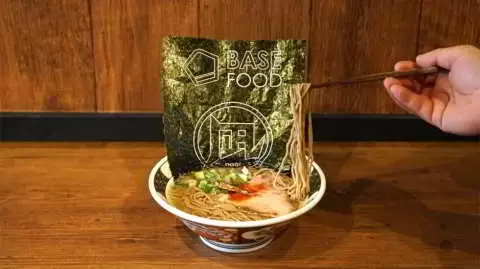
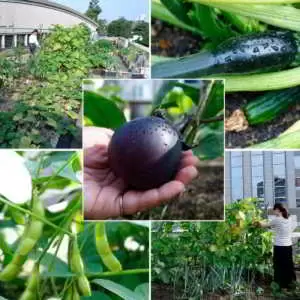
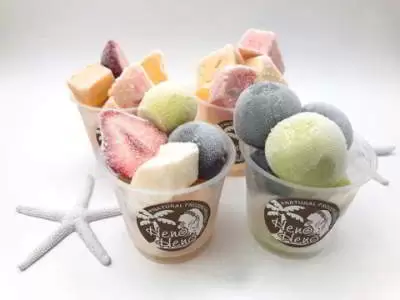
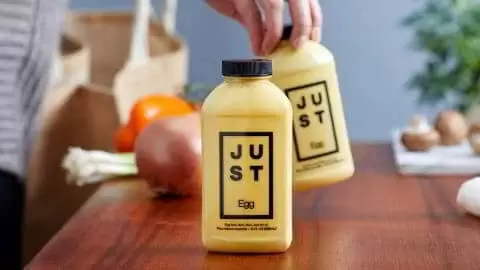 Is a rice startup known for developing vegetable “eggs” and vegetable beef. The company promotes an environmentally friendly and sustainable “alternative protein revolution”.
Is a rice startup known for developing vegetable “eggs” and vegetable beef. The company promotes an environmentally friendly and sustainable “alternative protein revolution”.

